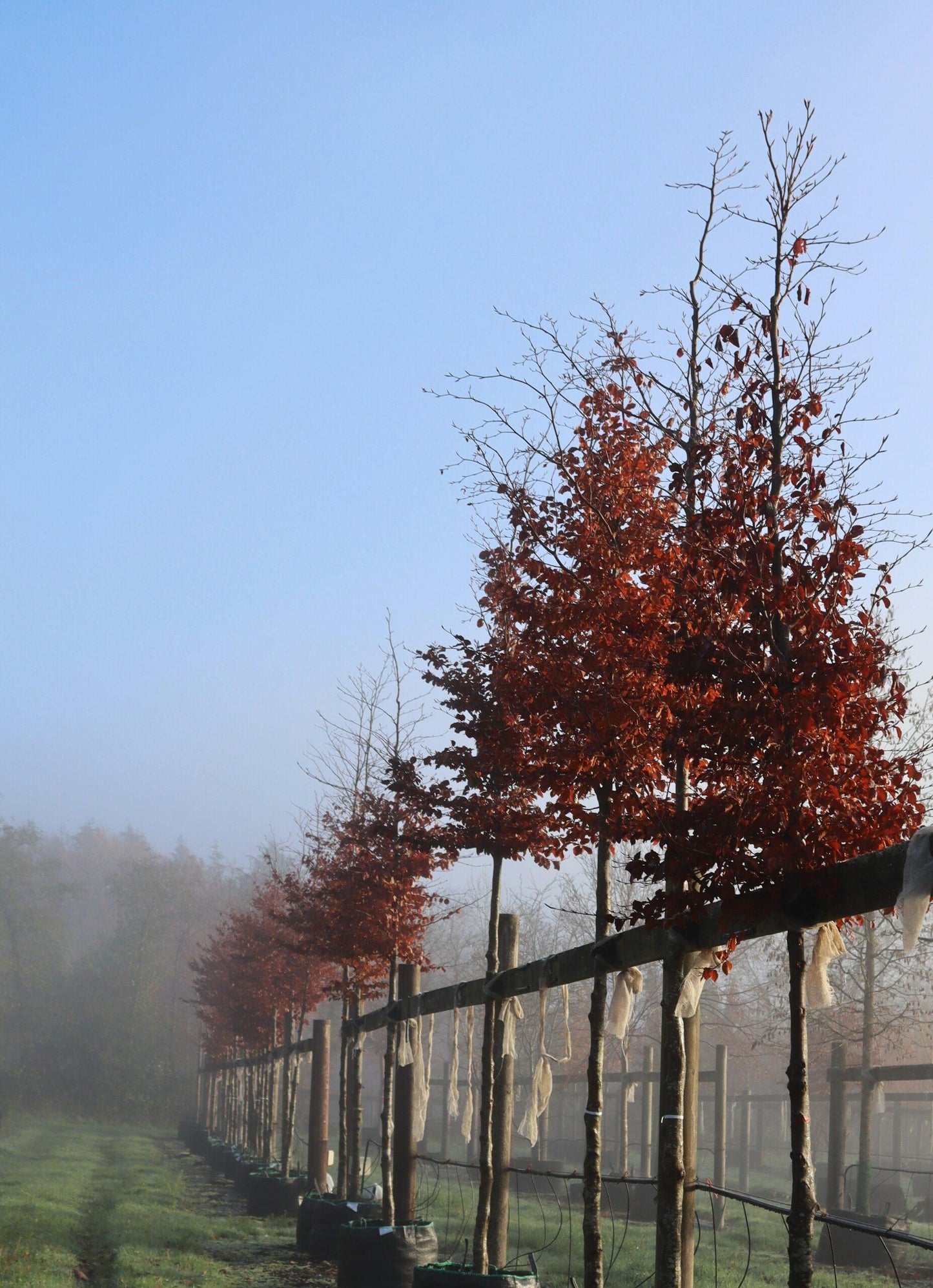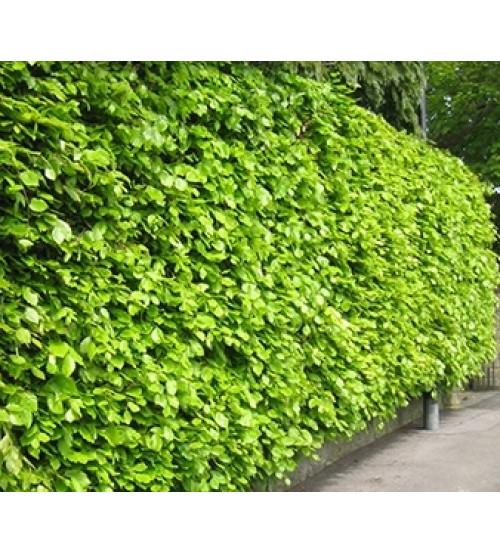1
/
of
13
European Beech-Screen Container-Perfect for Gardens 7' h, 6' w
European Beech-Screen Container-Perfect for Gardens 7' h, 6' w
Regular price
$4,400.00 USD
Regular price
$5,720.00 USD
Sale price
$4,400.00 USD
Unit price
/
per
Shipping calculated at checkout.
SKU:nto7683-redcrocus
Couldn't load pickup availability
Fagus sylvatica Screen Container
Description
The Fagus sylvatica, commonly known as European Beech, is a majestic deciduous tree renowned for its smooth gray bark and dense, lush foliage. In a screen container format, it serves as an excellent choice for creating privacy screens or windbreaks in gardens and landscapes.
Suggested Uses
Ideal for use as a privacy screen, windbreak, or as a specimen tree in large gardens. Its dense foliage also makes it suitable for topiary and formal hedging.
Plant Details
-
 Botanical Name: Fagus sylvatica Screen Container
Botanical Name: Fagus sylvatica Screen Container -
 Common Name: European Beech, Screen Container
Common Name: European Beech, Screen Container -
 Size & Growth: Typically grows 50-60 feet tall and 30-40 feet wide
Size & Growth: Typically grows 50-60 feet tall and 30-40 feet wide -
 Hardiness Zones: 4-7
Hardiness Zones: 4-7 -
 Foliage Type: Deciduous
Foliage Type: Deciduous -
 Bloom Time: Spring
Bloom Time: Spring -
 Growth Rate: Moderate
Growth Rate: Moderate -
 Light Requirements: Full sun to partial shade
Light Requirements: Full sun to partial shade -
 Attracts Pollinators: No
Attracts Pollinators: No -
 Indoor Friendly: No
Indoor Friendly: No -
 Container Friendly: Yes, when young
Container Friendly: Yes, when young -
 Deer Resistant: Yes
Deer Resistant: Yes -
 Pet Warning: Non-toxic
Pet Warning: Non-toxic -
 Fragrant: No
Fragrant: No -
 Cut Flower: No
Cut Flower: No -
 Grows Well With: Understory plants like ferns and hostas
Grows Well With: Understory plants like ferns and hostas
Care Tips
-
 Planting Instructions: Plant in well-drained soil, ensuring the root ball is level with the ground surface.
Planting Instructions: Plant in well-drained soil, ensuring the root ball is level with the ground surface. -
 Soil Moisture: Keep soil consistently moist, especially in dry periods.
Soil Moisture: Keep soil consistently moist, especially in dry periods. -
 Soil Type: Prefers loamy, well-drained soil with a neutral to slightly acidic pH.
Soil Type: Prefers loamy, well-drained soil with a neutral to slightly acidic pH. -
 Humidity: Tolerates average humidity levels.
Humidity: Tolerates average humidity levels. -
 Pruning Instructions: Prune in late winter or early spring to maintain shape and remove dead or diseased wood.
Pruning Instructions: Prune in late winter or early spring to maintain shape and remove dead or diseased wood. -
 Winter Care: Mulch base to protect roots in colder climates.
Winter Care: Mulch base to protect roots in colder climates. -
 Planting Depth: Ensure the root flare is visible above soil level.
Planting Depth: Ensure the root flare is visible above soil level. -
 Fertilization: Fertilize in early spring with a balanced, slow-release fertilizer.
Fertilization: Fertilize in early spring with a balanced, slow-release fertilizer. -
 Special Care: Protect young trees from strong winds and harsh sun.
Special Care: Protect young trees from strong winds and harsh sun.
Share


























